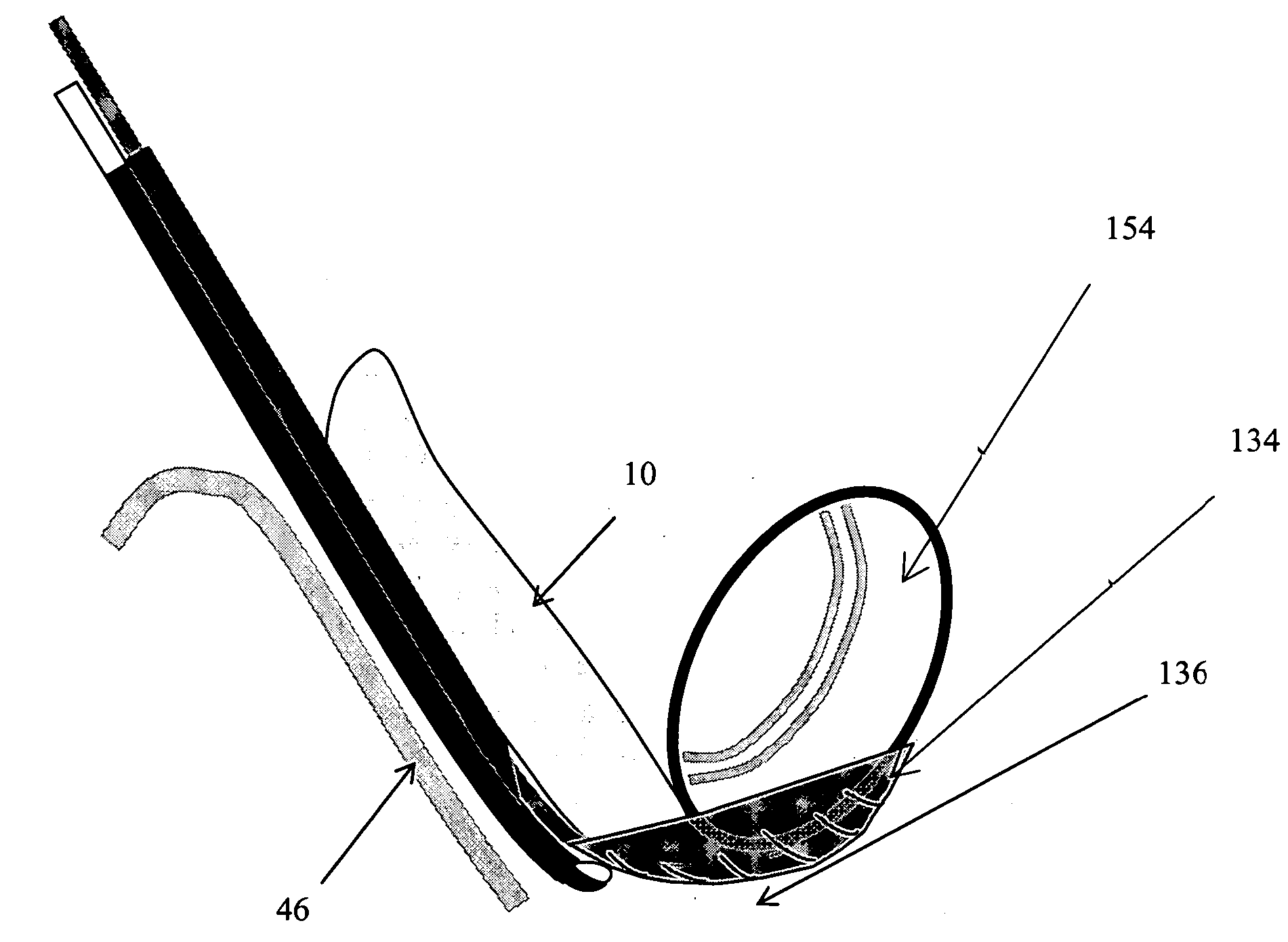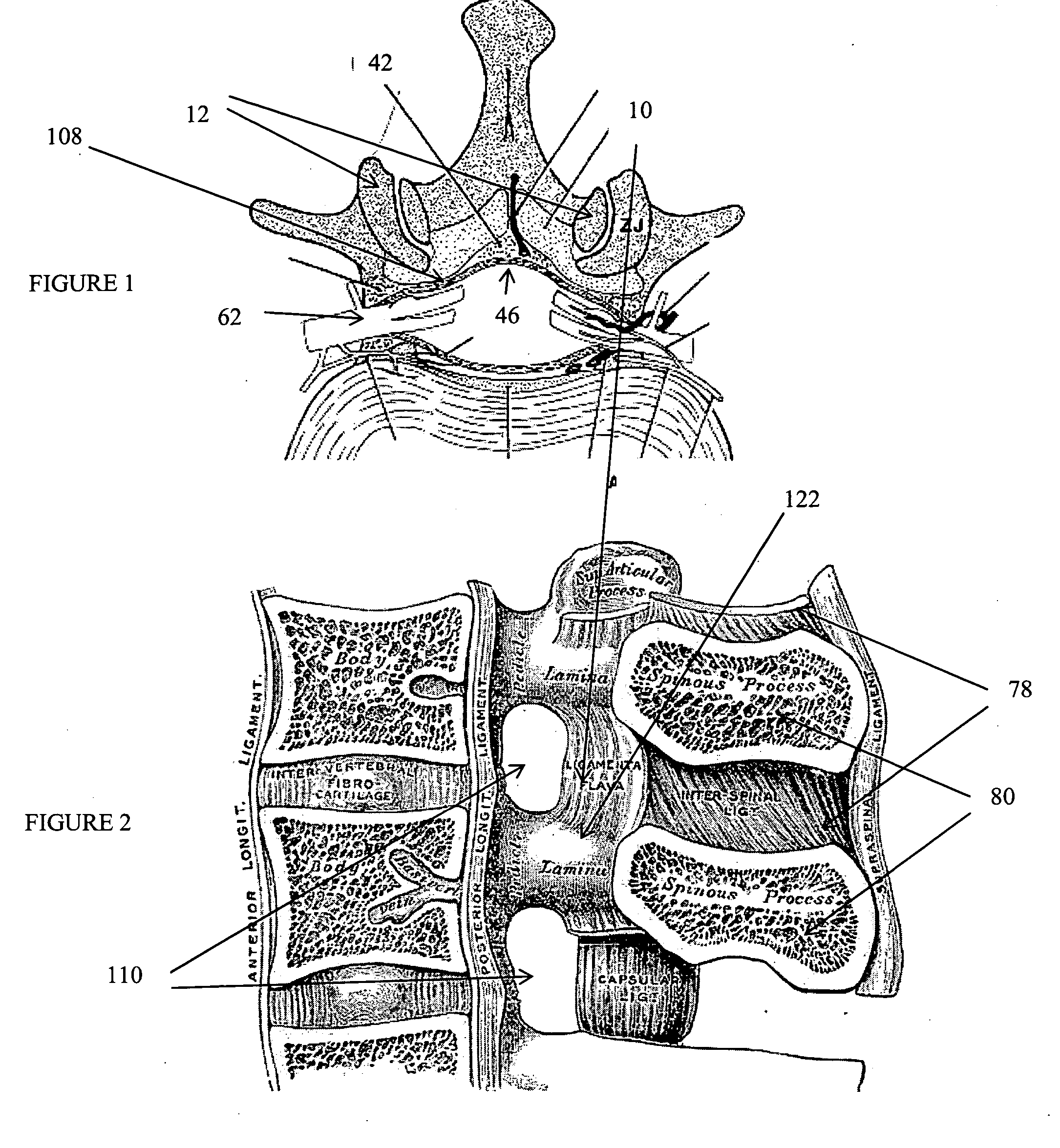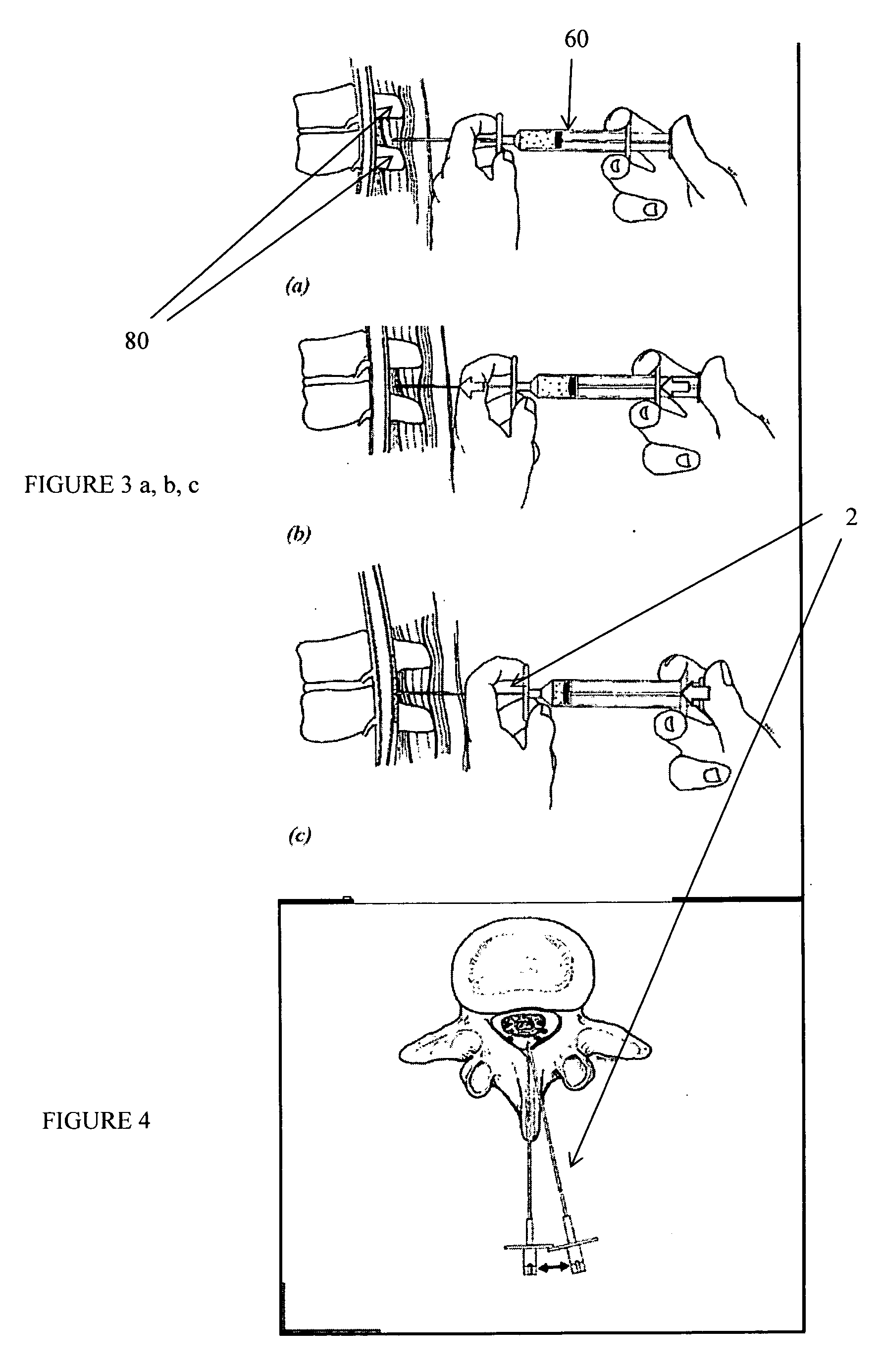Devices and methods for tissue access
a tissue access and tissue technology, applied in the direction of catheters, surgical forceps, therapy, etc., can solve the problems of increased neural irritation, ischemia, and onset of disease, and achieve the effect of enabling symptomatic reli
- Summary
- Abstract
- Description
- Claims
- Application Information
AI Technical Summary
Benefits of technology
Problems solved by technology
Method used
Image
Examples
Embodiment Construction
[0155] The present invention relates to methods and apparatus for the selective surgical removal or alteration of tissue that impinges upon spinal neural or vascular structures, with particular attention towards avoiding injury to the affected or adjacent neural and neurovascular structures. More particularly, a preferred embodiment of the present invention relates to methods and apparatus for lateral recess 108 and neural foraminal enlargement of the spine, in cases of neurovascular impingement, through a novel approach to selective and safe enlargement of the pathologically narrow spinal neural foramen 110, impinged lateral recess 108 and / or compromised central spinal canal. Tissues that impinge the spine's central canal, lateral recess 108, and neural foramen 110 may include, but are not limited to, ligamentum flavum 10; bone spurs or ligamentous calcifications; localized disc extrusions; enlarged facet joint complex 12, facet capsule, and superior articular processes; and scar t...
PUM
 Login to View More
Login to View More Abstract
Description
Claims
Application Information
 Login to View More
Login to View More - R&D
- Intellectual Property
- Life Sciences
- Materials
- Tech Scout
- Unparalleled Data Quality
- Higher Quality Content
- 60% Fewer Hallucinations
Browse by: Latest US Patents, China's latest patents, Technical Efficacy Thesaurus, Application Domain, Technology Topic, Popular Technical Reports.
© 2025 PatSnap. All rights reserved.Legal|Privacy policy|Modern Slavery Act Transparency Statement|Sitemap|About US| Contact US: help@patsnap.com



